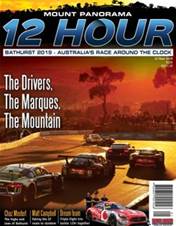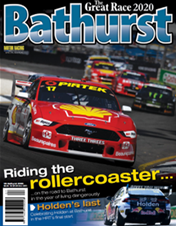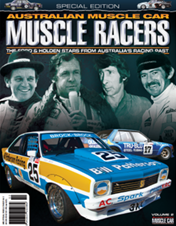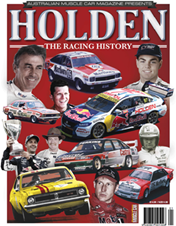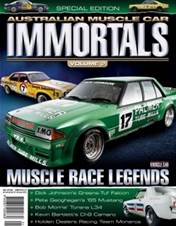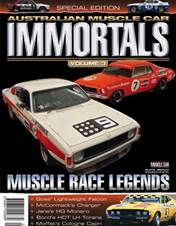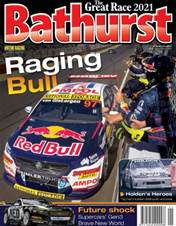The Australian car industry was riding high at the turn of the century. Both Holden and Ford were still selling Commodores and Falcons by the truckload and both brands were still investing in muscle car models.
Holden Special Vehicles (HSV), which was founded in the late 1980s after the infamous Peter Brock-Holden split ended the initial incarnation of HDT, was at the top of its game by the early 2000s. It had created a successful partnership with the factory and had expanded to a range of Commodore sedan, ute and Monaro-based models.
Ford, though, had yet to find its own equivalent with Tickford Vehicle Engineering (TVE) being established as a joint-venture in the 1990s before morphing into the grandly named, Ford Tickford Experience (FTE) and then Ford Performance Vehicles (FPV) in 2002 when Prodrive took control of Tickford.
And these were all in addition to the excellent muscle cars that Holden and Ford were rolling directly off their own production lines. We’ve looked at all the excellent muscle cars during this period and picked our favourite five.
5. 2000 FTE TS50

The AU Falcon won’t go down as Ford’s greatest decision but the team at FTE did their best and created a memorable muscle car out of it. This isn’t perhaps the best or most powerful muscle car Ford made during the decade, but it’s real impact was something greater.
This was the blue oval’s most deliberate attempt yet to hit back at Holden’s rising HSV operation. FTE pulled out the stops to create the TS50, taking the venerable 5.0-litre Windsor V8 and stroking it to 5.6-litres to extract 250kW of power and 500Nm of torque.
Available with optional Brembo brakes and Koni suspension, these were some of the best fast Falcons since the brand’s glory days of the 1970s.
4. 2001 Holden Monaro CV8

The launch of the VT Commodore in 1997 represented a seismic change for the brand and the model, because it was the first all-Australian design with no influence from Opel at all. This opened up a world of possibilities including reviving the iconic Monaro two-door.
The VT-based Coupe Concept stunned the crowds at the 1998 Sydney Motor Show and it convinced Holden management to push the green light on a production model that launched in 2001, as part of the VX Commodore line-up.
While it was available in many forms - from the supercharged V6 CV6 all the way up to the HSV Coupe GTS and all-wheel drive Coupe4 - for us the pinnacle of the range was the original CV8. Sleek and elegant but muscular too, it was powered by a 225kW 5.7-litre LS1 V8 that ensured it had the performance to match the looks.
3. 2006 HSV GTS

Holden was riding high in the mid-2000s with the launch of the VE Commodore, the so-called ‘Billion Dollar Baby’ that would (in theory) lead the brand into a new era of large car sales glory and new export markets.
Obviously it didn’t turn out that way but the VE Commodore was a great car and HSV managed to make it even greater with its range of upgrades. By this stage of its life HSV had expanded its line-up to include the Clubsport R8, Clubsport Tourer, Maloo, Senator and Grange but the headline act of the ‘E-Series’ was the GTS.
The GTS was powered by HSV’s first in-house engine design (taking over from US-based tuner, Callaway), taking Chevrolet’s LS2 and extracting 307kW and 550Nm. It gave HSV the advantage over the equivalent FPV GTs, which mustered 290kW and 520Nm from its 5.4-litre V8.
The first-generation E-Series GTS was a stylish car too, featuring a cleaner look that the E Series 2 models that came in 2009.
2. 2002 Ford Falcon XR6 Turbo

Yes, the second-best Australian muscle car of the 2000s wasn’t a V8. Ford shook up the establishment with the launch of the BA Falcon XR6 Turbo in 2002, proving that there was indeed a replacement for displacement.
This new turbocharged 4.0-litre inline six-cylinder ‘Barra’ engine was good for 240kW and 450Nm at a time when the 5.4-litre V8 in the XR8 made only 220kW and 470Nm. What’s more, the XR6 Turbo also out-muscled the Holden Commodore SS of the day, with its 225kW/460Nm 5.7-litre V8.
But power was only part of the story of the appeal of the turbocharged Falcon. Its smaller, lighter engine meant the XR6 Turbo handled better than its V8 rivals, making it one of the nicest muscle cars of the era to drive.
Later versions up the power and torque, and FPV even launched the 270kW/550Nm F6 Tyhoon in 2004, but its the breakthrough 2002 model that deserves its place on this list.
1. 2008 HSV W427

The GTS wasn’t the ultimate E-Series creation, instead that title belongs to the W427. Released in August 2008 the W427 was its magnum opus and the clear standout of the decade.
As the name implies it was powered by a 427ci V8 engine, or 7.0-litres in metric terms, which elevated it well above any of its peers at the time. The engine was Chevrolet’s famous LS7 unit, the same hand-built V8 that powered the Corvette Z06 at the time.
In the W427 it was tuned to make 375kW and 640Nm, which was a huge leap ahead of both the rest of the HSV range and anything Ford or FPV offered at the time. That made it the most powerful Australian muscle car ever built by either factory up to that point.
Officially it was designed as a celebration of HSV’s 20th anniversary, and the original show car revealed at the 2008 Melbourne Motor Show was finished in the same ‘Panorama Silver’ as the 1988 VL Commodore SS Group A SV (aka the ‘Walkinshaw’). But as much as it was a celebration, it was also a reminder to Ford and FPV that HSV was the king of Australian muscle cars and had the power to prove it.
What do you think of our choices - did we pick your favourite? Let us know what you think the best Australian Muscle Cars of the 2000s are on Facebook or Instagram.


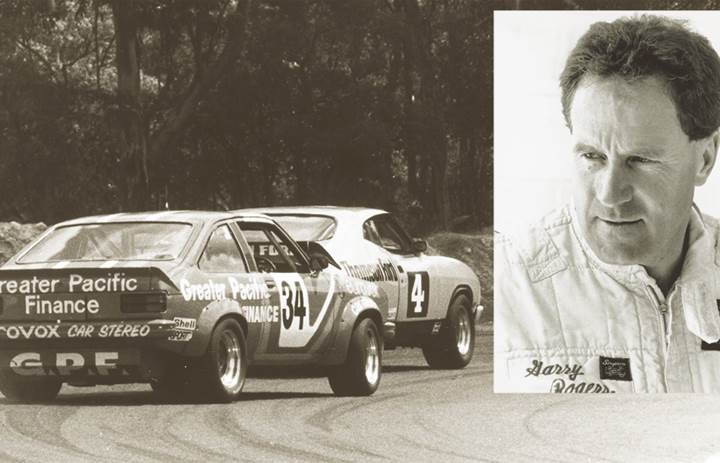


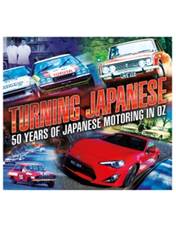
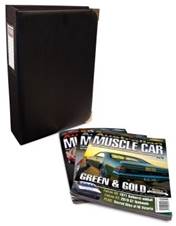


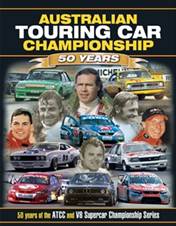

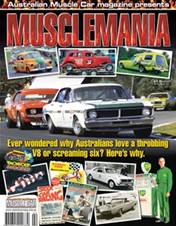
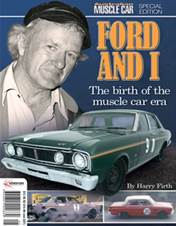
.jpg&q=70&h=226&w=176&c=1&s=1)
